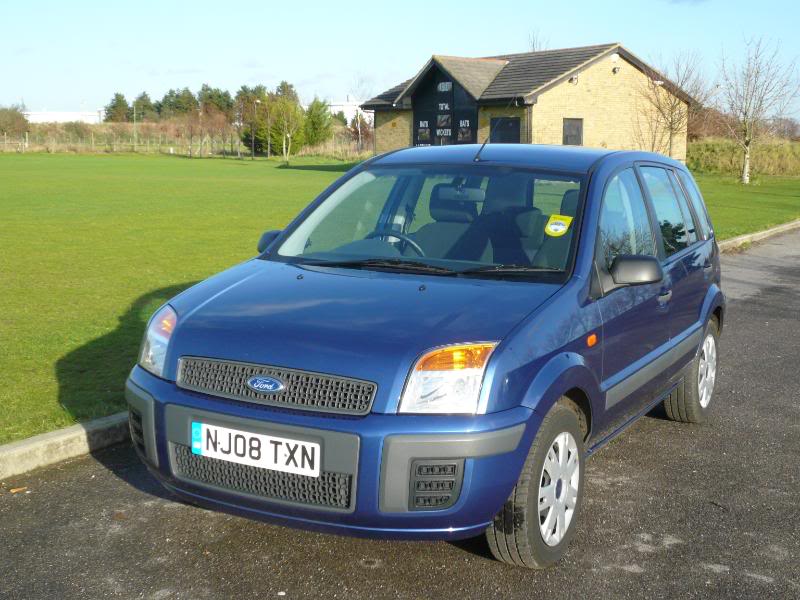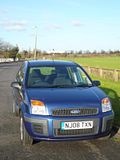

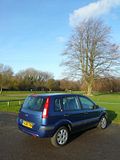

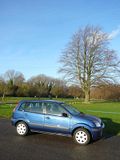


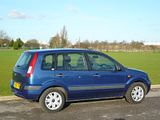
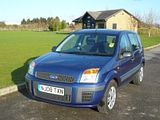
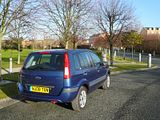
With the 1990 launch of the Ford Escort, it is generally acknowledged that Ford of Europe hit the nadir of product offering, with a car that was universally criticised by the press for its low standards of just about everything: styling, lousy engines, soggy handling, poor refinement and terrible seats. It was clear that the bean-counters had strangled the product, allowing Ford to produce a car that they thought might be just about good enough. It was not. Stung by the negative reviews, not only did a series of urgent revisions to what at the time was Ford’s best seller ensue, but a series of thoroughly well engineered and class-leading cars followed, starting with the 1993 Mondeo. Ever since then, all European designed and engineered Fords have been launched to critical acclaim, with just one exception. That car is the Fusion, which received a somewhat luke-warm reaction when it first appeared in 2003, even though it was based on the well-received Fiesta of the previous year. Since then, it has fared little better, gaining a reputation as car aimed at the older driver, a characterisation that was not generally made of its competitors from Vauxhall, Renault and Fiat, all of who launched cars aimed at the same market segment within a few months of the Fusion’s appearance. l have never particularly minded the looks of the Fusion, and when I tested a German spec model in 2004, was reasonably impressed. That was nearly six years ago, and many new cars have appeared on the market since then, so I took the opportunity to reassess the latest Fusion when Hertz had one on offer at Heathrow, and now present my findings.
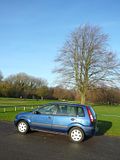

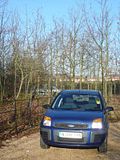
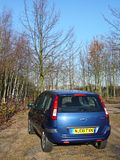
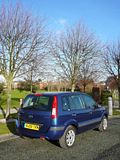
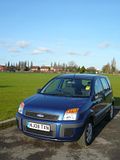
The Fusion was designed to capitalise on a perceived market niche for compact super-mini sized cars that offer that bit more space in them than the regular designs. The solution generally adopted in the market was to make a taller car, and a range of B-segment MPVs appeared within a few months of each other. Based heavily on the recently launched Fiesta, the Fusion appeared just somewhat taller and squared off around the edges, so less obviously a mini-MPV than the Meriva or Modus, but not quite the small estate car like the Fabia or 206. It shared much with the Fiesta, including a subset of the same engines, and a similar, though slightly different cabin design. Whereas the Fiesta frequently topped the best-seller lists, the Fusion has sold in far smaller numbers, and a light mid-life facelift did little to improve matters.

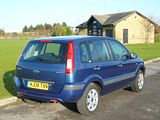

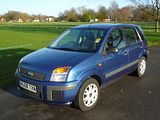
In recognition of the extra weight of the Fusion over the regular Fiesta, the entry level models are fitted with the 1.4 litre petrol engine, and not the smaller 1.25, and this was indeed the motive power for the test car. Developing 79 bhp, it proved to be quite a lively, if rather noisy unit. The gearing is well considered, so as to make the most of the available power, and I found the car acceptably nippy around town. On longer inclines on the motorway, you could feel the speed atrophy a little, but, with one-up at least, there was no need to reach for the gearlever to attend to this slowing down. Actually, using the gears was no hardship, as the gear change was good, with a pretty close movement between the gears and the lever slotting readily from forward gear to forward gear. Selecting reverse was not quite so good, as there were times when there was no clear evidence that the lever had slotted cleanly into place, even though the car was then able to move backwards. On the motorway, the Fusion was not particularly quiet, with noticeable road noise to supplement the engine noise, but it was far from unbearable. As this is a Ford, you might hope that it delivers much of the driving experience that so impresses in many of their other models. By and large, you will not be disappointed. The steering is well weighted, and precise, and has that feeling that this is yet another car on which Mr Parry Jones worked his magic. The handling is good, too, allowing the car to be cornered feeling almost as if it is on rails. Doubtless it is not quite as good as the equivalent Fiesta, as the car is heavier and has a slightly higher centre of gravity, but it still impresses. This does not appear to come at the expense of the ride, which was generally good, too. No issues with the brakes, which worked well at stopping the car when called so to do. Good marks, then, for the driving experience.

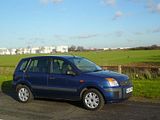


As you get in the Fusion and install yourself in the driving seat, the overriding impression is that you are sitting up high. Even when I had moved the driver’s seat as low as it would go, the feeling was that I was still somewhat higher than you would be in an ordinary supermini. That said, once the column was appropriately adjusted, the driving position was good. It allowed me to survey the dash, which has to be one of the weak points of this car. It is moulded in a particularly nasty form of cheap plastic, with a sort of horrid stippling texture that does it no favours. That said, the basic design is not that different to that from the previous generation Fiesta, and everything is clear and intuitive to use. As well as a speedometer and rev counter, you get proper gauges for water temperature and fuel level, unlike the bar charts that used to be in the Fiesta. Other controls are very much “standard issue” Ford, and none the worse for that. The test car had air conditioning and a good quality CD/radio, though the speakers were perhaps not the best feature.
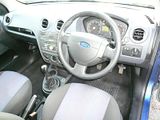



The real reason why people would buy a Fusion and not a Fiesta is for the extra space and practicality in a car with a similar footprint. There is no external release for the boot, apart from the key lock, so access is gained either from a remote button on the dashboard, or by pressing the appropriate button on the key fob. The boot is a regular shape, and is moderately generous when the parcel shelf is in place and the rear seats are in use. Fold the seats forward though, which you can do by either dropping the backrest on the cushion, or by cantilevering the cushion forwards and then dropping the back rest into the space provided and you get a voluminous cargo area. If you need even more space, an additional trick of this car is that you can fold the passenger seat backrest forward so it lies flat on the cushion, thus giving even more length. Inside the passenger cabin, the usual door bins and glove box are augmented with a deep cubby on the top of the centre of the dash. Above the glove box is a small lipped area that could be used for additional items of the sort of paraphenalia that a family car like this could reasonably be expected to accumulate.
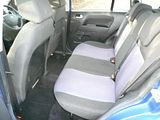

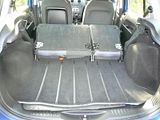

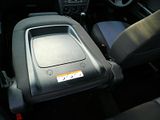
The test car was in Style Climate spec, which is the cheapest of the trim levels offered on the Fusion, and while it is far from luxurious, it is not totally stripped out. The Climate spec adds not just air conditioning, but also heated door mirrors and Ford’s much praised Quick-Clear windscreen to the Style trim, all of which are worthwhile features. Standard on the Style are electric front windows, remote central locking, a stereo radio/CD system, ABS, driver and passenger airbags, and 60/40 split folding rear seats. The Zetec model brings a number of additional items including alloy wheels, front fog lights, body coloured side mouldings and door handles, leather gear lever and different seat trim. There is a + version which brings added equipment features, but the list price starts to look really very ambitious for this trim level.

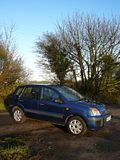
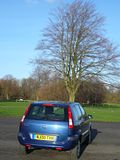



Does the Fusion deserve its fate, perceived as a rather boxy Fiesta also-ran, appreciated by a minority of, let’s call them, the older buyer? Almost certainly not. What you get is a car that certainly is quite boxy in design, but is far from the ugliest car on the road – there are plenty of visually unfortunate designs around to vie for that honour – that drives quite well, and being a Ford, will be relatively painless and cost-effective to own. The current list price, as with all Ford cars, is a complete joke, but few private buyers should have to pay anything close to the numbers Ford will publish, so armed with a decent discount, the cheaper models in the range may well represent decent value for money and certainly should not be discounted out of hand.
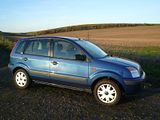
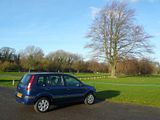
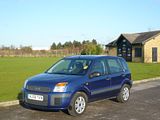
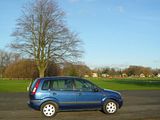

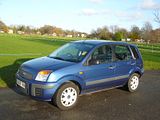

2009-12-12 19:39:46














































